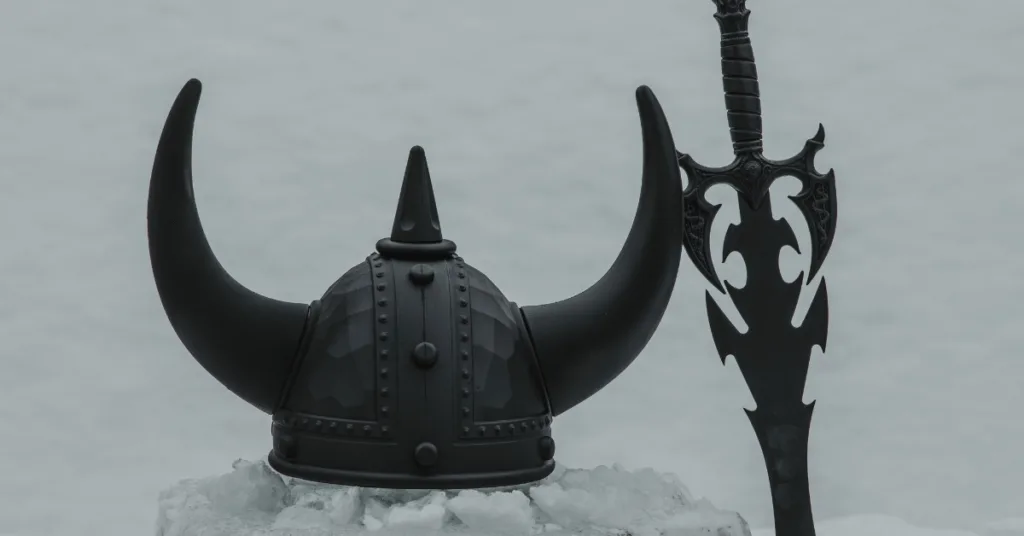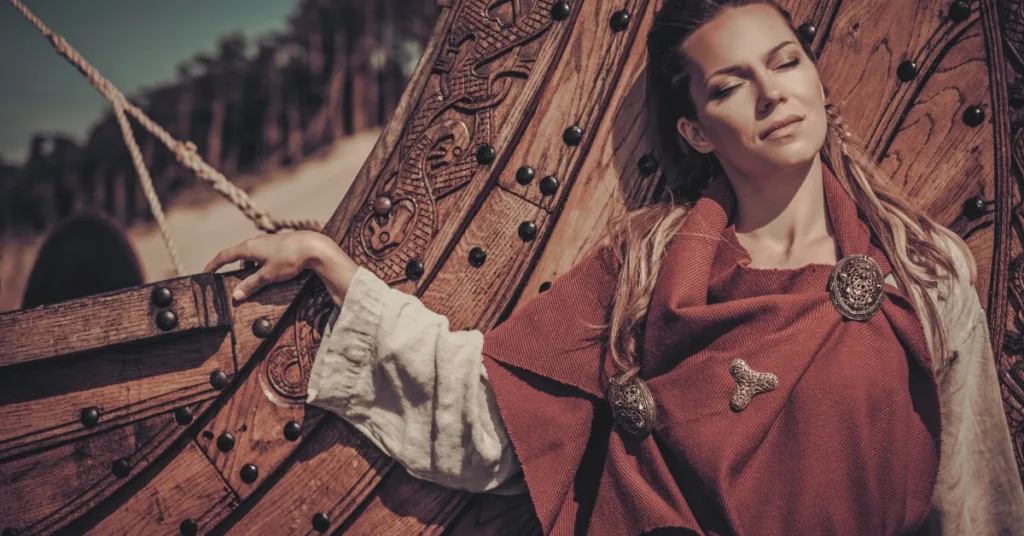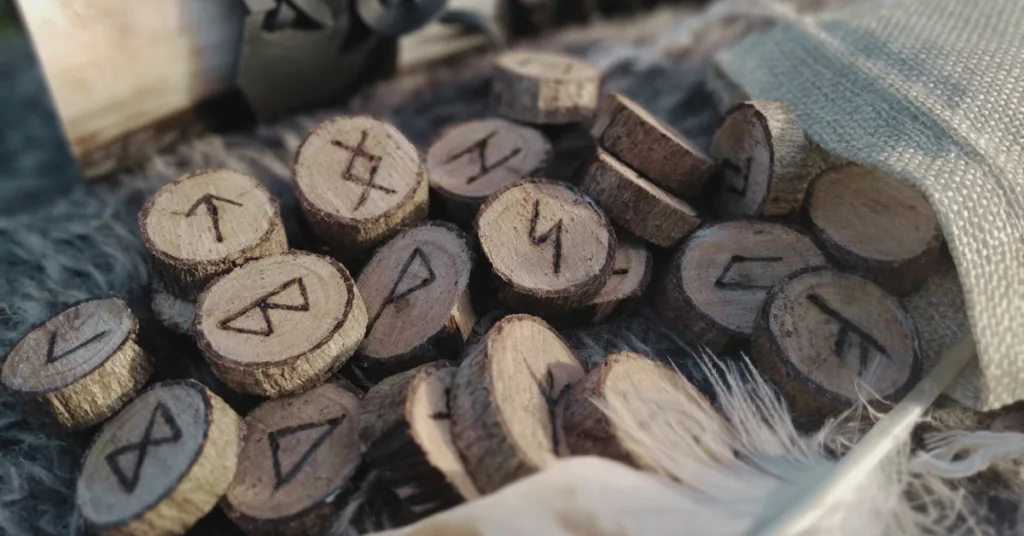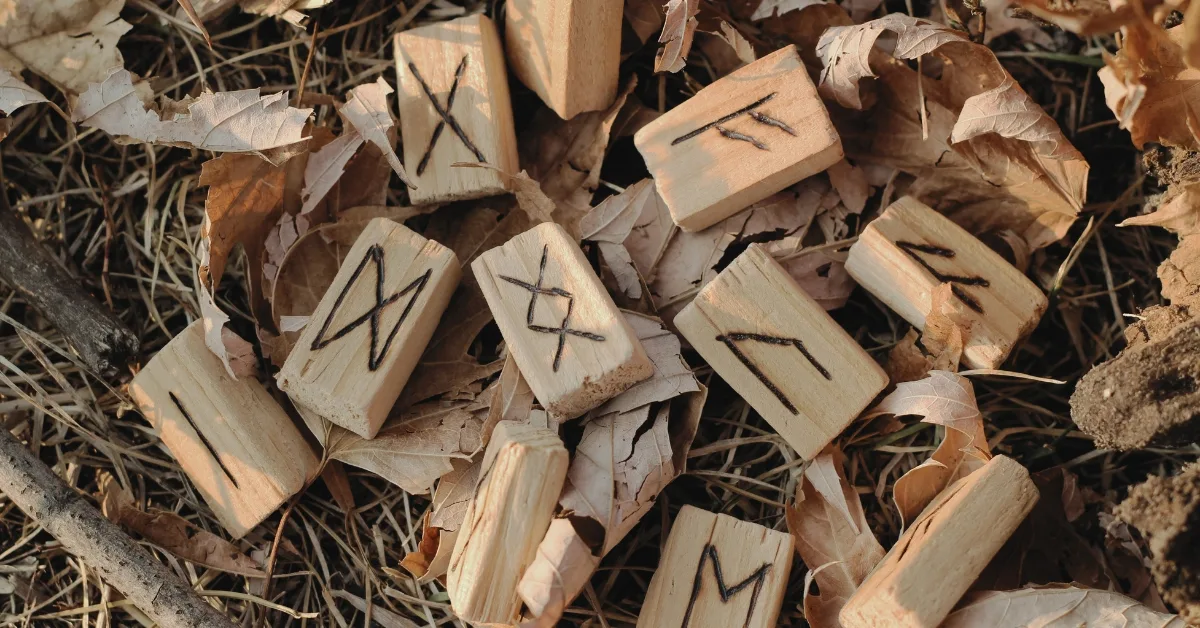Runes are the characters of various alphabets used by ancient Germanic peoples, including the Vikings, for writing, divination, and magickal practices. Each rune is associated with specific sounds, meanings, and mystical properties relating to Norse mythology and beliefs.
This guide explains the origins and history of runes, explores the different runic alphabets and their characteristics, uncovers the role of runes in Norse mythology and cosmology, and discusses their use in divination, runic magick, and mysticism. Additionally, we will provide resources for studying, learning, and applying runes in a modern context.
Contents
Rune Origins and History

Runes have a rich history, originating from the Proto-Germanic language and culture and being extensively used throughout Scandinavia during the Viking Age. They were developed as a writing system and later evolved to encompass mystical and magickal purposes.
- The ancestral language of the Germanic language family, spoken by ancient Germanic peoples.
- The creation and evolution of various runic alphabets, such as Elder Futhark, Younger Futhark, and Anglo-Saxon Futhorc.
- The discovery of runic inscriptions on various objects, including runestones, weapons, jewelry, and personal items.
Proto-Germanic Language and Culture
The Proto-Germanic language is the reconstructed ancestral language of the Germanic language family, which includes modern languages such as English, German, Dutch, and the Scandinavian languages. This language was spoken by ancient Germanic peoples who inhabited parts of Europe during the Iron Age and early Middle Ages.
Runic Alphabets Development
The development of runic alphabets began with the Elder Futhark, the oldest known runic alphabet, which consisted of 24 runes. Over time, the Elder Futhark evolved into the Younger Futhark, a simplified 16-rune alphabet, and the Anglo-Saxon Futhorc, an expanded 33-rune alphabet adapted for Old English.
Runic Inscriptions and Findings
Runic inscriptions have been discovered on various objects, such as runestones, weapons, tools, jewelry, and personal items. These inscriptions served purposes like commemoration, dedication, protection, ownership, and identity. The discovery of these inscriptions has provided valuable insights into the lives, beliefs, and practices of ancient Germanic peoples. The Meldorf fibula is considered to be the oldest artifact showing runes. It dates back to around 50 CE and is notable because it bears one of the earliest known inscriptions using runes from the Elder Futhark runic alphabet.
Runic Alphabets and Their Characteristics

There are three main runic alphabets: Elder Futhark, Younger Futhark, and Anglo-Saxon Futhorc. Each alphabet has its own unique set of runes, with variations in the number of characters and their shapes.
- Elder Futhark: The oldest runic alphabet, consisting of 24 runes.
- Younger Futhark: A simplified alphabet with 16 runes, divided into long-branch and short-twig variants.
- Anglo-Saxon Futhorc: An expanded alphabet with 33 runes, adapted for writing Old English and featuring unique runes and innovations, including several anglo-saxon runes distinct from the elder futhark runes.
Elder Futhark: The 24-Rune Alphabet
The Elder Futhark is the oldest known runic alphabet, dating back to the 2nd century CE. It consists of 24 runes, each associated with a specific sound and meaning. The runes are divided into three groups of eight called aettir. The Elder Futhark was used primarily for inscriptions on various objects and is the foundation for the development of later runic alphabets. The word “Futhark” is an acronym for the first six runes of this alphabet: Fehu, Uruz, Thurisaz, Ansuz, Raidho, and Kaunaz.
Younger Futhark: Long-Branch and Short-Twig Variants
The Younger Futhark emerged in the 9th century CE as a simplified version of the Elder Futhark, consisting of 16 runes, and became the standard alphabet in Scandinavia during the Viking Age. It has two main variants: the long-branch runes, characterized by their elongated vertical strokes, and the short-twig runes, featuring shorter and more angular strokes, both of which were popular during the Viking Age for inscriptions on runestones. These variants were used in different regions and time periods. The reduction in runes was likely influenced by the temporal sound changes impacting Norse speech patterns over the centuries.
Anglo-Saxon Futhorc: Unique Runes and Innovations
The Anglo-Saxon Futhorc is an expanded runic alphabet, consisting of 33 runes. It was developed in the 5th century CE for writing Old English and incorporated additional runes to represent sounds specific to the language. The Anglo-Saxon Futhorc also features unique runes and innovations not found in other runic alphabets.
Runes in Norse Mythology and Cosmology

Runes play a significant role in Norse mythology and cosmology, with Odin, the chief god, being credited with the discovery of runes. Runic mythology and lore, including runic poems and rune names, provide insight into the mystical associations and meanings of individual runes.
Read More: Runes and Their Meanings
- The myth of Odin’s self-sacrifice to obtain the knowledge of runes.
- The stories, poems, and associations surrounding individual runes and their meanings.
- The role of runes in the Norse cosmological framework, including Yggdrasil and the Norns.
Odin and the Discovery of Viking Runes
In Norse mythology, Odin, the chief god, is credited with the discovery of runes. According to the myth, Odin hung himself upside-down from the tree Yggdrasil for nine days and nights, pierced by his own spear, in order to gain wisdom and understanding of the runes.
After enduring immense suffering and staring into the abyss, visions of the runic characters began appearing before Odin’s eyes. As he deciphered their meanings, he perceived profound insights into the nature of the cosmos and the forces governing existence. Odin’s terrible ordeal allowed him to unravel the mysteries of the runes, granting him unrivaled mastery over their magic and symbolic significance.
Runic Mythology, Lore, and Rune Names
Each rune in the various runic alphabets has its own name, mythological associations, and meanings. These are often described in runic poems, such as the Old English Rune Poem and the Icelandic Rune Poem. These poems provide insight into the cultural and mystical significance of each rune, as well as their practical applications in divination and magick.
Runes in Norse Cosmology: Yggdrasil and the Norns
In Norse cosmology, runes are intimately connected with the world tree, Yggdrasil, and the Norns, the female entities who shape the destinies of gods and mortals, embodying the essence of Old Norse beliefs and the fabric of Viking Age mythology. The Norns are said to carve the fates of all beings into the trunk of Yggdrasil, using the runes as their tools. This connection between runes and fate highlights their importance in Norse mythology and their potential for divination and magickal work.
Runes in Divination, Magick, and Mysticism

Runes have been used for divination, magick, and mysticism for centuries. Rune divination involves methods such as rune casting and interpretation, while runic magick encompasses practices like creating bind runes, chanting galdr, and crafting talismans. In the Viking Age, these practices were integral to spiritual and magickal workings. Runic meditation and self-discovery are also important aspects of working with runes.
Read More: Runic Magick Basics
- Rune Divination: The practice of using runes to gain insight, guidance, and foresight.
- Runic Magick: The use of runes in magickal practices for protection, manifestation, and transformation.
- Runic Meditation and Self-Discovery: The process of contemplating runic meanings and using runes as tools for personal growth and spiritual development.
Rune Divination: Methods and Interpretation
Rune divination involves various methods, such as rune casting, where runes are drawn from a bag or cast onto a surface, and then interpreted based on their positions and combinations. Common rune casting methods include the three-rune cast and the nine-rune cast. The interpretation of rune casts requires knowledge of the meanings and associations of each rune, as well as an understanding of the context and question being asked.
Runic Magick: Bind runes, Galdr, and Talismans
Runic magick involves the use of runes for magickal purposes, such as protection, manifestation, and transformation. Bind runes are ligatures of two or more runes, creating a new symbol that combines the energies and meanings of the individual runes. Galdr is the practice of chanting runes to invoke their power and energies. Runic talismans and amulets are created by inscribing runes onto objects to imbue them with specific magickal properties.
Runic Meditation and Self-Discovery
Runic meditation involves contemplating the meanings and associations of individual runes, as well as using them as tools for self-discovery and personal growth. By focusing on a specific rune and its symbolism, one can gain insight into their own psyche and spiritual path. Runic meditation can also involve visualizing and internalizing the shapes and energies of the runes, allowing for a deeper connection with their magickal properties.
Studying, Learning, and Applying Runes in Modern Context

For those interested in studying and learning runes, there are numerous resources available, including books, online courses, and workshops. Runic research and scholarship, such as runology and linguistic analysis, provide a deeper understanding of the historical and cultural context of runes.
| Resource | Description |
|---|---|
| Books and Manuscripts | Written works that provide information on runes, their history, meanings, and applications. |
| Online Courses and Tutorials | Digital resources that offer structured learning experiences for studying runes. |
| Workshops and Seminars | In-person or online events that provide hands-on training and guidance from experienced practitioners. |
Resources for Learning Runes
There are many resources available for those who wish to learn about runes, including books, manuscripts, online courses, and tutorials. These resources offer a wide range of information, from the historical and linguistic aspects of runes to their practical applications in divination and magick. It is important to choose reputable sources and to approach the study of runes with an open mind and a willingness to learn.
Runic Research and Scholarship
Runic research and scholarship, such as runology and linguistic analysis, provide valuable insights into the historical and cultural context of runes. Runology is the academic study of runes, focusing on their origins, development, and interpretation. Linguistic analysis examines the etymological and grammatical aspects of runic inscriptions, shedding light on the languages and dialects of the ancient Germanic peoples.
Runes in Contemporary Pagan and Heathen Traditions
In modern times, runes have found a place in contemporary Pagan and Heathen traditions, where they are used for divination, magick, and spiritual practices. These traditions often draw upon the historical and mythological associations of runes, while also adapting them to modern contexts and personal spiritual paths. When working with runes in a modern setting, it is important to approach them with respect, understanding, and an open mind, while being mindful of cultural appropriation and the responsible use of this ancient magickal tool.





